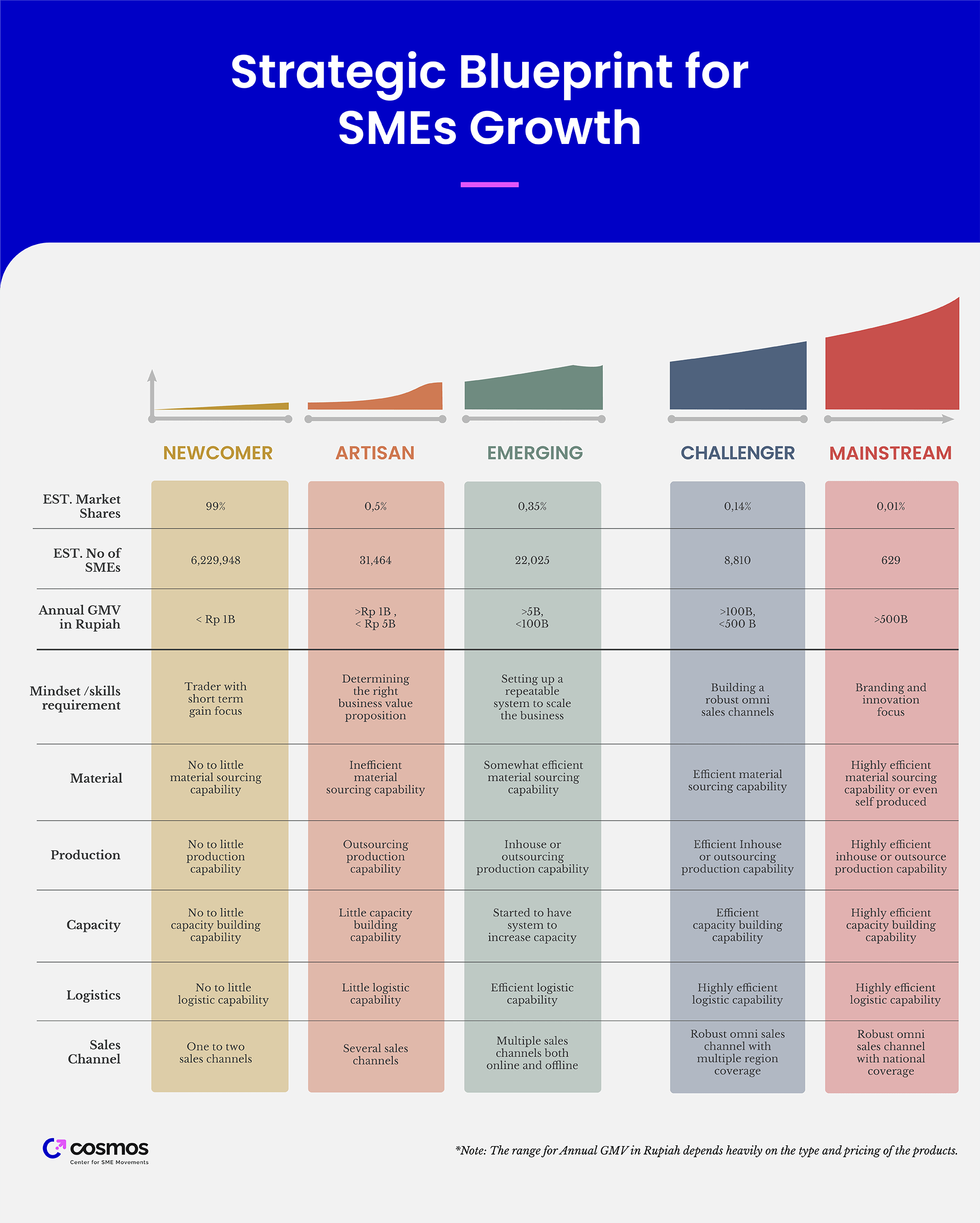Source: Indonesia’s SMEs hold the key to growth. How can they scale up?
-
Indonesia’s small businesses will be an essential driver of the country’s future development.
-
Currently most are micro-enterprises – there is an urgent need to understand how they could scale up and become established companies.
-
A new blueprint will help owners to understand how they can take their businesses to the next level.
Indonesia is going through unprecedented times. A new middle class is on the rise, and digital technology has brought increased opportunities to start a business. Currently there are over 62 million SMEs (Small and Medium-sized Enterprises) in the country, which is one SME for every five Indonesians. Of these, 98.75% (61.5 million) are micro-enterprises. Developing these small businesses into bigger ones will be an essential driver of the country’s future development.
Many early-stage SMEs lack a strategic growth plan. There is an urgent need to develop a blueprint to help more SMEs scale up successfully. The main focus in the past couple of years has been digital transformation. For micro-enterprises, however, this is not always the answer; they don’t have the managerial or operational capacities to grow, even with digital help. What is it that allows some SMEs to become established companies?
To find the answer, we have conducted extensive interviews with more than 50 Indonesian SMEs at various stages. This was supported by Evermos and Shopee, large e-commerce websites serving Indonesia and elsewhere. Our particular interest was to understand the different characteristics among SMEs and how they grow.
It became clear that many businesses didn’t know exactly where they were in their growth journey. More importantly, they did not have a clear sense of their own potential. Even when asked what skills and mindsets they would need to grow, almost all of the owners –especially the ones in earlier stages – couldn’t answer the question: they simply had no idea.
We categorized the SMEs into different stages, with distinct characteristics: newcomer, artisan, emerging, challenger and mainstream. We looked at the characteristics of the owners, their mindset, skills and how they operated their business, and combined our findings into a practical framework. This can be used by SMEs as a guide to help them to achieve their full potential, from starting their business to creating a scalable managerial and operational system.

The first three stages (newcomer, artisan and emerging businesses) are most important, as they make up 99.85% of all business in Indonesia. They often lack the resources to take on a strategic approach toward growth. Many newcomers, which make up over 99.0% of the business, are stuck. They have problems in identifying the right target market, what type of product/service the market needs, and how to fulfil that need at a profit.
The challenges are different for artisans (0.5%). After they find their product market fit, they struggle with scalability. To deliver their products to their target market, they need to create a scalable system for key resources and processes. For both categories, digital transformation will be of limited benefit. These businesses require basic training in value creation and system building (whether in customer value proposition, team building, production, sourcing material, etc).
Emerging business (0.35%) face a different problem. Business owners at the emerging stage have a sense of accomplishment as they have already achieved some growth. Owners proved themselves, and have often received validation from their peers in their industry. But despite their hard work, many business owners at this stage hit stagnation, which they take as a false signal of having reached their peak. Many business owners then jump to the conclusion that there is no longer room for growth in their market segment. Some seek new challenges by expanding their business, sometimes even outside their own initial industry, at the risk of losing focus.
In the emerging stage, the main challenge is to maintain focus by going deep into their product and knocking on doors, opening new sales channels along the way. At this stage, what businesses need is help to expand their sales coverage by building a robust sales channel throughout different regions in the country.
So while it’s true that there is no definitive guide to growth, this blueprint should help SMEs navigate the challenges at different stages. We are hopeful that with a more personalized approach, more SMEs can grow and contribute significantly to Indonesia’s economic growth.




